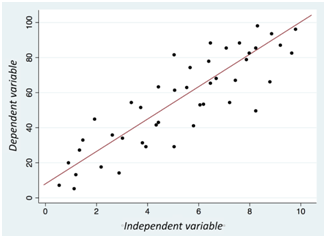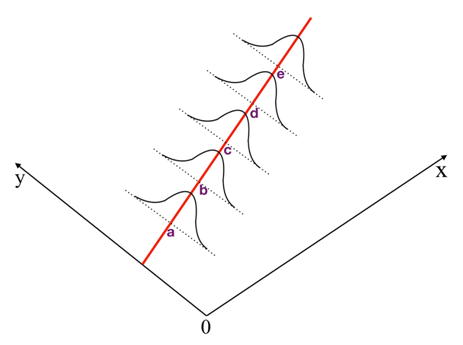eISSN: 2378-315X


Editorial Volume 7 Issue 4
1The Care Quality Research Group, South Korea
2Department of Nursing, SoonChunHyang University, Cheon-an, Chungcheongnam-do, South Korea
Correspondence: Su Ha Han, Department of Nursing, SoonChunHyang University, 31 SoonChunHyang 6-gil, dongnam-gu, Cheonan-si, Chungcheongnam-do, 31151, South Korea, Tel 82-41-570-2487, Fax 82-41-570-2498
Received: August 14, 2018 | Published: August 27, 2018
Citation: Jeong HJ, Han SH. 221B Baker street, episode 3: the blind regressor-Part 2. Biom Biostat Int J. 2018;7(4):369-370. DOI: 10.15406/bbij.2018.07.00232
Previously on 221β |
“Oh, nice work. Now, that’s more like it. You must be a statistician! So, using your beautiful graph, will you kindly explain the four assumptions applied to the regression?”

The student begins to talk, “First, ‘L’ means linear relation between the x-value and y-value of observations. As we can see on the board, the larger the x-value, the higher the y-value of an observation. Then, ‘I,’ um… this means independence… Ah, each dot, that is, each observation, is independent from the others!” The student begins to speak faster, looking as if he is excited.
“Now ‘N.’ It’s normal: If we draw a histogram or kernel density plot with the value of the dependent variable, it must be distributed normally or at least similarly. Finally, ‘E’ equals variance. Sorry, I don’t really know what that means.”
Sherlock sighs deeply and says, “Well, quite honestly, your level of understanding on the regression assumptions is world class.”
John walks to the whiteboard and begins to erase everything on it. He must feel the impending death of the virgin spirit… too virgin as a person facing his final defense. “Good luck and rest in peace,” John tells the student, patting him on his shoulder. Now it’s Sherlock’s time. He stands and draws a graph. It looks like the student’s but, clearly, there are more components. Most of all, it is three-dimensional.

Sherlock begins to explain. “Yes, you use the mnemonic ‘LINE’ well, and indeed ‘L’ for linear relation is quite true. But the other three have issues. First is the independence assumption. Independent is not what you mean; it is conditionally independent. That is, if you fit the linear model like what’s on the whiteboard, the so-called residuals ̶ the difference between the fitted value (a-e) ̶ are independent. Otherwise, if the independence means an unconditional relationship, there cannot be a linear regression. What line can we draw? The point is that the line is controlling for disturbances of seemingly random locations of observation on the plane. Then, the rest are easy. Again, focus only on five points, a-e; observations lie around them or, more precisely, perpendicular to the x line. The observations tend to spread as in a normal distribution. Also, for every fitted point, there is the ‘same width normal distribution.’ This is what you call normality and equal variance mean.”
Sherlock returns to his normal cold character and says, “Get out! Come back the day after tomorrow. Homework is to explain the residual plot using the above four assumptions.
To be continued…

©2018 Jeong, et al. This is an open access article distributed under the terms of the, which permits unrestricted use, distribution, and build upon your work non-commercially.
2 7